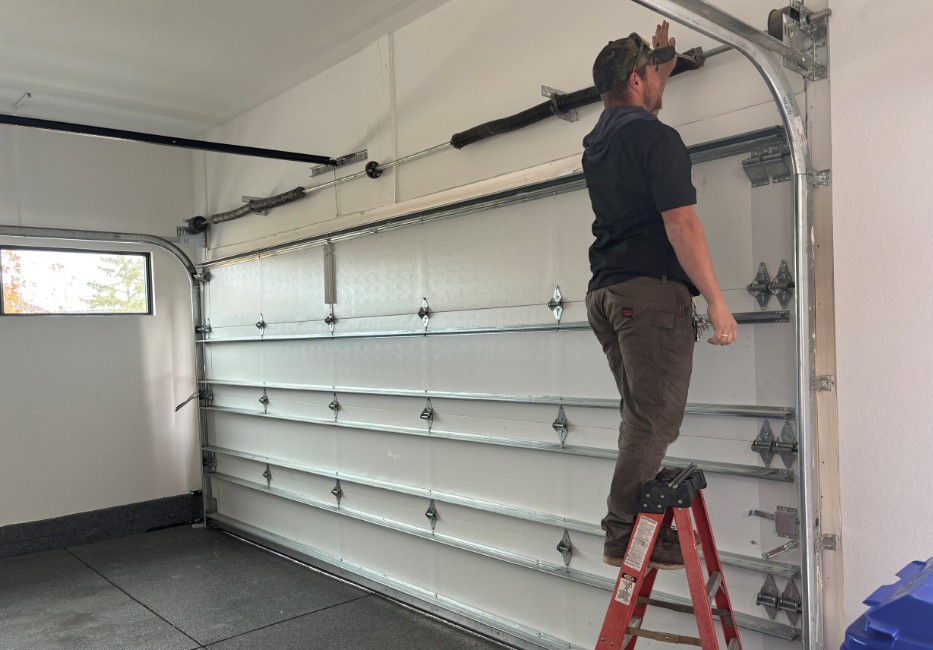Commercial Real Estate Mid-Year 2022: The Big Slowdown

To paraphrase Ernest Hemingway, distress in commercial real estate markets typically develops gradually, then suddenly. Perhaps that is because we spend a long time talking about trends, and then suddenly investors wake up to a more risky market and spreads instantly widen. In our 2022 outlook, we explored the hightened complexity within the real estate markets as economic dynamics alter the math in predicitng investment yield Most importantly, we are transitioning from an artificial landscape of monetary and fiscal stimulus that inflated returns and asset values toward a market-based interest rate and pricing environment as both the federal government and the Federal Reserve withdraw. At the beginning of the year we knew interest rates would rise, but we didn’t know the pandemic would continue to unleash waves of new variants around the world, exacerbating global supply chain disruption. And we couldn’t know that the first major war in Europe in eighty years would erupt, causing unimaginable human tragedy, dislocating the energy markets, and intensifying already high inflation. What a difference six months has made. The magnitude and unpredictability of change has resulted in a riskier investment market for all asset classes and the accompanying requirement for higher risk adjusted returns.
The immediate impact of this more challenging investment environment, particularly the higher cost of capital, has been a slow down in transactions. Higher interest rates to real estate are like fire to a scarecrow. They reduce profit margins on new deals and can spoil the anticipated exit on existing deals. Accordingly, investors and their lenders are taking more time to model cash flows and valuations. The longer-term impact will bring both opportunity and pain. As the market transitions so will owners and investors, from the sprint of the last few years to a marathon. As we wrote in January, focusing on the longer-term horizon is not only an appropriate strategy in a period of volatility but healthy for the markets. In the next few years, as market participates adjust to the new reality, it will likely take more capital and sweat to achieve success in real estate investing.
Despite the economic volatility, most properties continue to outperform expectations. The fundamentals of real estate remain strong, creating somewhat of a disconnect between the property markets and the capital markets. Of course, real estate is a leveraged business, and each must exist with the other. The strength in market liquidity and property performance heading into this period of change will soften the blow of the newly emerging interest rate and inflation environment. This article will highlight the factors investors will need to consider in response to a new investment environment. While investors are currently taking a risk-off approach, long-term real estate investment opportunities remain.
The Exogenous Factors – Economic Volatility
The inflation caused by supply chain disruptions during the pandemic and exacerbated by the war in Ukraine has proven to be stubborn. The 7.5{73375d9cc0eb62eadf703eace8c5332f876cb0fdecf5a1aaee3be06b81bdcf82} annual Consumer Price Index (CPI) was expected to fall during the year but instead rose to 9.1{73375d9cc0eb62eadf703eace8c5332f876cb0fdecf5a1aaee3be06b81bdcf82} by June.1 The Wall Street Journal’s June Economic Survey indicated an average estimate of year-end inflation of about 7{73375d9cc0eb62eadf703eace8c5332f876cb0fdecf5a1aaee3be06b81bdcf82} (the lowest estimate was 4.5{73375d9cc0eb62eadf703eace8c5332f876cb0fdecf5a1aaee3be06b81bdcf82} and the highest 9.9{73375d9cc0eb62eadf703eace8c5332f876cb0fdecf5a1aaee3be06b81bdcf82}), twice the 3.4{73375d9cc0eb62eadf703eace8c5332f876cb0fdecf5a1aaee3be06b81bdcf82} estimated in January. Interestingly, the same group’s estimate for year-end inflation in 2023 is a relatively modest 3.26{73375d9cc0eb62eadf703eace8c5332f876cb0fdecf5a1aaee3be06b81bdcf82}, but the markets do not appear to be thinking that far ahead.
Inflation is often the real estate industry’s friend, enabling increases in rents that are hopefully higher than increases in operating costs. Hence the view that real estate is an inflation hedge, particularly for properties with short-term leases. But the sword cuts both ways as the market’s response to inflation has been significantly higher interest rates, both through the Fed’s aggressive remedies and the market’s anticipation of further Fed rate hikes. Recent fears of recession have tempered interest rate escalation. With first quarter Gross Domestic Product (GDP) down 1.6{73375d9cc0eb62eadf703eace8c5332f876cb0fdecf5a1aaee3be06b81bdcf82}2 and second quarter estimates hovering around neutral, the recession may already have arrived. The probability of a recession rose from 18{73375d9cc0eb62eadf703eace8c5332f876cb0fdecf5a1aaee3be06b81bdcf82} in January to 44{73375d9cc0eb62eadf703eace8c5332f876cb0fdecf5a1aaee3be06b81bdcf82} in June in the WSJ Survey. But not all recessions are alike, and whatever comes will likely be far more benign than our memories of the Great Recession fifteen years ago. Today’s buffers against a severe economic downturn are immense liquidity and a strong job market. At the same time, reductions in the Fed’s balance sheet and investor concerns have the potential to gradually, then suddenly, pull capital out of real estate.
The 10-year Treasury rate started the year around 1.6{73375d9cc0eb62eadf703eace8c5332f876cb0fdecf5a1aaee3be06b81bdcf82} and ended the second quarter around 3{73375d9cc0eb62eadf703eace8c5332f876cb0fdecf5a1aaee3be06b81bdcf82}, reaching a peak of 3.5{73375d9cc0eb62eadf703eace8c5332f876cb0fdecf5a1aaee3be06b81bdcf82} mid-June (awkwardly during the CRE Finance Council’s annual meeting, putting the group in a rather somber mood).3 At the time this article was written the rate had fallen to about 3.0{73375d9cc0eb62eadf703eace8c5332f876cb0fdecf5a1aaee3be06b81bdcf82}. Reflecting higher risk in the system, credit spreads have also widened, resulting in a cost of capital double whammy. According to data from Trepp, CMBS AAA spreads have widened between 70 and 90 basis points since the beginning of the year and BBB spreads have widened between 185 and 215 basis points, depending on the issuer of the bonds.
It is important to remember that real property performance, with the exception of hospitality, is far more correlated to job growth than GDP. The June job creation number surpassed analyst expectations. We are enjoying record low unemployment. There are over 11 million job openings nationally.4 As long as Americans have jobs and their wages grow more than long-term inflation, the performance of most property sectors should be sustained through a mild recession.
The Economic Picture: Rapid Chnage and Rising Risk
| INTEREST RATES | ||
|---|---|---|
| January 3, 2022 | June 30, 2022 | |
| Federal Funds Rate | 0.08{73375d9cc0eb62eadf703eace8c5332f876cb0fdecf5a1aaee3be06b81bdcf82} | 1.58{73375d9cc0eb62eadf703eace8c5332f876cb0fdecf5a1aaee3be06b81bdcf82} |
| 10-Year Treasury Rate | 1.63{73375d9cc0eb62eadf703eace8c5332f876cb0fdecf5a1aaee3be06b81bdcf82} | 2.98{73375d9cc0eb62eadf703eace8c5332f876cb0fdecf5a1aaee3be06b81bdcf82} |
| 30-Year Fixed Rate Home Mortgage | 3.22{73375d9cc0eb62eadf703eace8c5332f876cb0fdecf5a1aaee3be06b81bdcf82} | 5.70{73375d9cc0eb62eadf703eace8c5332f876cb0fdecf5a1aaee3be06b81bdcf82} |
| Term SOFR (Secured Overnight Financing Rate) | 0.05{73375d9cc0eb62eadf703eace8c5332f876cb0fdecf5a1aaee3be06b81bdcf82} | 1.50{73375d9cc0eb62eadf703eace8c5332f876cb0fdecf5a1aaee3be06b81bdcf82} |
| CMBS AAA Credit Spread | ~70 | ~150 |
| ECONOMIC INDICATORS | ||
|---|---|---|
| Early 2022 | Most Recent | |
| Consumer Price Index | 7.50{73375d9cc0eb62eadf703eace8c5332f876cb0fdecf5a1aaee3be06b81bdcf82} | 9.10{73375d9cc0eb62eadf703eace8c5332f876cb0fdecf5a1aaee3be06b81bdcf82} |
| ISM Manufacturing Purchasing Manager’s Index | 57.6 | 53.0 |
| Unemployment Rate | 4.00{73375d9cc0eb62eadf703eace8c5332f876cb0fdecf5a1aaee3be06b81bdcf82} | 3.60{73375d9cc0eb62eadf703eace8c5332f876cb0fdecf5a1aaee3be06b81bdcf82} |
| Job Openings | 11.3 million | 11.3 million |
| Michigan Consumer Sentiment Index | 67.2 | 50 |
| Conference Board Consumer Confidence Index | 113.8 | 98.7 |
| WSJ Economic Survey – Est. 2022 GDP Growth | 3.33{73375d9cc0eb62eadf703eace8c5332f876cb0fdecf5a1aaee3be06b81bdcf82} | 1.28{73375d9cc0eb62eadf703eace8c5332f876cb0fdecf5a1aaee3be06b81bdcf82} |
| WSJ Economic Survey – Recession Probability | 18{73375d9cc0eb62eadf703eace8c5332f876cb0fdecf5a1aaee3be06b81bdcf82} | 44{73375d9cc0eb62eadf703eace8c5332f876cb0fdecf5a1aaee3be06b81bdcf82} |
Property Performance Supported by Demographics and Jobs
The higher cost of capital, rather than real estate fundamentals, is what is slowing down real estate investment. Of course, inflation and a recession could dampen demand for some property types; as discretionary spending decreases more people may stay home rather than spending money on retail and hotels. But overall, demographics and other demand generators are keeping occupancy up and rents high.
Multifamily and industrial continue to be the two most desired property types. The rapidly rising cost of owning a home is further fueling multifamily demand. The Case Shiller U.S. Home Price Index rose more than 20{73375d9cc0eb62eadf703eace8c5332f876cb0fdecf5a1aaee3be06b81bdcf82} year-over-year through April. On top of continued higher prices, the 30-year fixed rate mortgage rate rose from about 3.2{73375d9cc0eb62eadf703eace8c5332f876cb0fdecf5a1aaee3be06b81bdcf82} at the beginning of the year to 5.7{73375d9cc0eb62eadf703eace8c5332f876cb0fdecf5a1aaee3be06b81bdcf82} at the end of June.5 The upshot is that the National Association of Realtors Housing Affordability Index fell 24{73375d9cc0eb62eadf703eace8c5332f876cb0fdecf5a1aaee3be06b81bdcf82} between January and April, which does not reflect the steep rise in rates in June. Based on home prices, down payment requirements and mortgage rates, only a quarter of American households qualify for a mortgage on a medium-priced home.6
Multifamily demand is being further bolstered by new Gen Z household formation. A study by Cushman & Wakefield estimates that Gen Z will comprise over 30{73375d9cc0eb62eadf703eace8c5332f876cb0fdecf5a1aaee3be06b81bdcf82} of renting households by 2025, roughly equivalent to Millennials. Additionally, more Boomers are taking advantage of the hot market to sell their homes and rent for a while. Each of these factors has driven up apartment rents and pushed down vacancies. A recent analysis by Moody’s indicates that national rents are up about 17{73375d9cc0eb62eadf703eace8c5332f876cb0fdecf5a1aaee3be06b81bdcf82} in the last twelve months. As apartments become unaffordable, household creation is likely to slow. Rents will continue to grow, but at a slower pace.
Industrial demand also remains strong. While there are risks of over-building in several markets, many companies are increasing product inventories to avoid supply chain disruptions and extending their reach toward customers through last mile distribution centers. According to Marcus & Millichap, a record 551 million square feet of industrial space was absorbed in the twelve months ending April 2022. Robust property performance is expected to continue.
Retail has been the problem child of the real estate industry for many years as oversupply is slowly and painfully wound down and retailers adjust to new consumer behaviors and preferences. The University of Michigan Consumer Sentiment Index fell from 67.2 in January to 50.0 in June, the lowest in the history of the index, and the Conference Board’s Consumer Confidence Index fell from 113.8 to 98.7 during the same period. These gloomy statistics are not surprising given the recent spike in inflation, particularly gas and food prices, and recession fears. Yet retail sales are holding remarkably well, with only a small decline in May. The good news is that online spending as a percent of all sales has been flat as consumers are eager for in-store shopping experiences with family and friends. Even malls have recently had more traffic. This recent in-store performance does not suggest retail real estate is poised for growth; a recession would put continued stress on retailers and the nation continues to be severely over-stored.
The office market continues to pose significant risks for investors and owners. The number of workers going back to the office is increasing every month. However, most workers no longer want to be in the office full-time, especially as gas prices increase the cost of commuting. Office tenants are listening to their employees and watching their checkbooks. Many are trying to renegotiate rent and reduce space prior to the expiration of their leases. Others will clearly reduce space and move to higher quality properties as leases turn. A recent tenant study by CBRE found that over 50{73375d9cc0eb62eadf703eace8c5332f876cb0fdecf5a1aaee3be06b81bdcf82} of respondents expect to reduce office space over the next three years.
Despite this, we read a lot about new office leases. Almost all companies need office space, and many of those new leases are companies moving to better quality space. The net effective rents achieved on new leases are not part of the press release, so rent trends are not clear. And national vacancy remains stubbornly high, particularly in gateway cities. According to CoStar, office availability in New York City has risen almost 40{73375d9cc0eb62eadf703eace8c5332f876cb0fdecf5a1aaee3be06b81bdcf82} since the beginning of 2020. Hemingway was not an office investor, but his adage holds particularly true for this segment of the market. Owners will go through the drip, drip of lease negotiations until suddenly, over a period of years, they run into trouble with their lenders. We are already seeing, very early in this process, a slight uptick in office loan delinquency. A recent study by New York University predicted an average 30{73375d9cc0eb62eadf703eace8c5332f876cb0fdecf5a1aaee3be06b81bdcf82} reduction in office values. The pain will be mostly felt in older, lower quality buildings that lack what tenants now demand: excellent design and floorplans, state of the art air flow, excellent light, building amenities, and environmental and wellness certifications.
Whenever the investment environment becomes riskier, investors differentiate assets and markets in the pursuit of rent growth. Sun Belt and Mountain markets continue to experience in-migration and above average job creation, and investment dollars will follow those trends. Around the nation suburban markets are outperforming the cities they surround as people work and play closer to home. Property users are more focused on environmental vulnerabilities and impact, as well as health and wellness. In a recession there is always a flight to quality, including higher quality properties. These and many other variables will be used to distinguish investment options for the foreseeable future.
Capital Flows and Valuations in an Upside-Down Market
Rent and cash flow growth is even more critical for successful investing as the cost of capital rises. Investors are currently faced with the unusual inversion of lending rates and capitalization rates, or negative leverage. Theoretically, cap rates reflect the aggregate of required returns of both equity and debt. But during the past decade a wave of capital, fueled by artificially low interest rates, compressed cap rates below their historical averages. Many investors believe that liquidity has made cap rates invulnerable to rising interest rates. However, when lending rates rise and yields fall, capital often seeks a new home in other asset classes. Real estate is always cyclical. The only way to deal with the current rate environment is through cash flow growth, which will vary greatly by property type and market and may be mitigated by a prolonged economic slowdown. Hence, the investors are pausing to re-evaluate their strategies.
The cost of debt becomes even greater when considering the higher cost of locking in rates. Many investors want the flexibility of mortgage prepayment and therefore prefer floating rate loans. Uncertainty in the rate market has blown out the cost of swapping from floating to fixed or buying interest rate caps. This is putting further pressure on transaction yields and making investment in transitional properties more difficult.
Of course, the other impact of rising cap rates, particularly without adequate rent growth, is a fall in valuations. This is perhaps the most alarming development for investors. We are currently in a period of price discovery where buyers are looking for deals and sellers are unwilling to reduce asking prices. It will take many months and many transactions to fully assess the impact on valuations, but anecdotal evidence suggests modest cap rate increases to date, with the resulting diminution in value.
Given these new dynamics, perhaps the most difficult part of the investment process is estimating the exit. Existing investment syndicates planning to improve and sell a property within the next few years may not be able achieve the expected exit price, reducing investor returns and sponsor promotes. And predicting exit prices on new deals is next to impossible. Hence, the major slow down in transaction volume ahead of us until rates and valuations find their new equilibrium.
Real estate lenders, which provide most of the capital that fuels the industry, are also slowing things down. With higher rates and recession concerns lenders have tightened underwriting, often reducing proceeds and adding structure to bolster credit. Lenders are particularly focused on debt service coverage given the potential for weaker cash flows and the certainty of higher rates. They are also laser focused on near-term maturities and the ability of borrowers to refinance the loans in a higher rate environment. Transitional lenders, particularly debt funds, are carefully monitoring the performance of their collateral, and requiring more frequent reporting from borrowers on their ability to achieve their business plans.
Not all transitional loans will make it. Despite the many tailwinds supporting property performance, the new interest rate regime is certain to result in pockets of distress. As mentioned, loans with near term maturities are the most vulnerable, but lenders will likely kick the can down the road for a while and see what happens before racking up defaults and impairments. Loans collateralized by retail properties offering the wrong product in the wrong market will continue to default. And office loans are waiting in the wings. The proliferation of debt funds in the last two years (Commercial Mortgage Alert listed more than 150 in a recent issue) have a tough road ahead. They are not only providing loans to fund property repositioning, but mezzanine loans at a time when values will likely fall. Unlike banks, the funds are reliant on warehouse lending to originate loans, and often refresh capital by selling loans into the commercial loan obligation (CLO) market. On the front end the borrowing rates on the lines have rapidly risen, and on the back end the CLO market is practically closed. Again, things are slowing down, and the more complex transactions will move particularly slowly.
Finding a New Path Forward
The suddenness of rate increases and recession concerns in the second quarter has left many real estate investors and operators in the doldrums. The Commercial Property Executive’s CPE 100 Quarterly Sentiment Survey in June revealed that 92{73375d9cc0eb62eadf703eace8c5332f876cb0fdecf5a1aaee3be06b81bdcf82} of respondents believed real estate performance will weaken in the next six months versus only 23{73375d9cc0eb62eadf703eace8c5332f876cb0fdecf5a1aaee3be06b81bdcf82} in their first quarter survey. Despite the gloomy outlook there are always opportunities. As we concluded in our January market review, investors need to work harder to navigate the uncertainty and risk in commercial real estate. Investors can no longer paint with a broad brush, but must differentiate by property and market, seeking quality in the path of growth.
The math in real estate investing has changed. Transitioning to higher interest rates and cap rates, lower valuations and less robust yields will be a painful process. Once things have settled down and investors are accustomed to the new reality, liquidity and transaction volumes will return. Patient investors with longer term horizons will win out, as long as they have short-term leases and long-term debt maturities, and have avoided the office sector. Above all, investors need to be nimble and rapidly adjust their strategies. We are entering a new real estate cycle, not because of real estate supply and demand but because of economic volatility and a regime change in government support for liquidity. The respective timing of rising cap rates, rising rents, lease renewals, and loan maturities will sort out the winners and losers.
1U.S. Bureau of Labor Statistics
2U.S. Bureau of Economic Analysis
3Federal Reserve
4U.S. Bureau of Labor Statistics JOLT Survey
5Freddie Mac
6According to St. Louis Fed Economic Data the median priced home in the U.S. was $428,700 in the first quarter 2022







